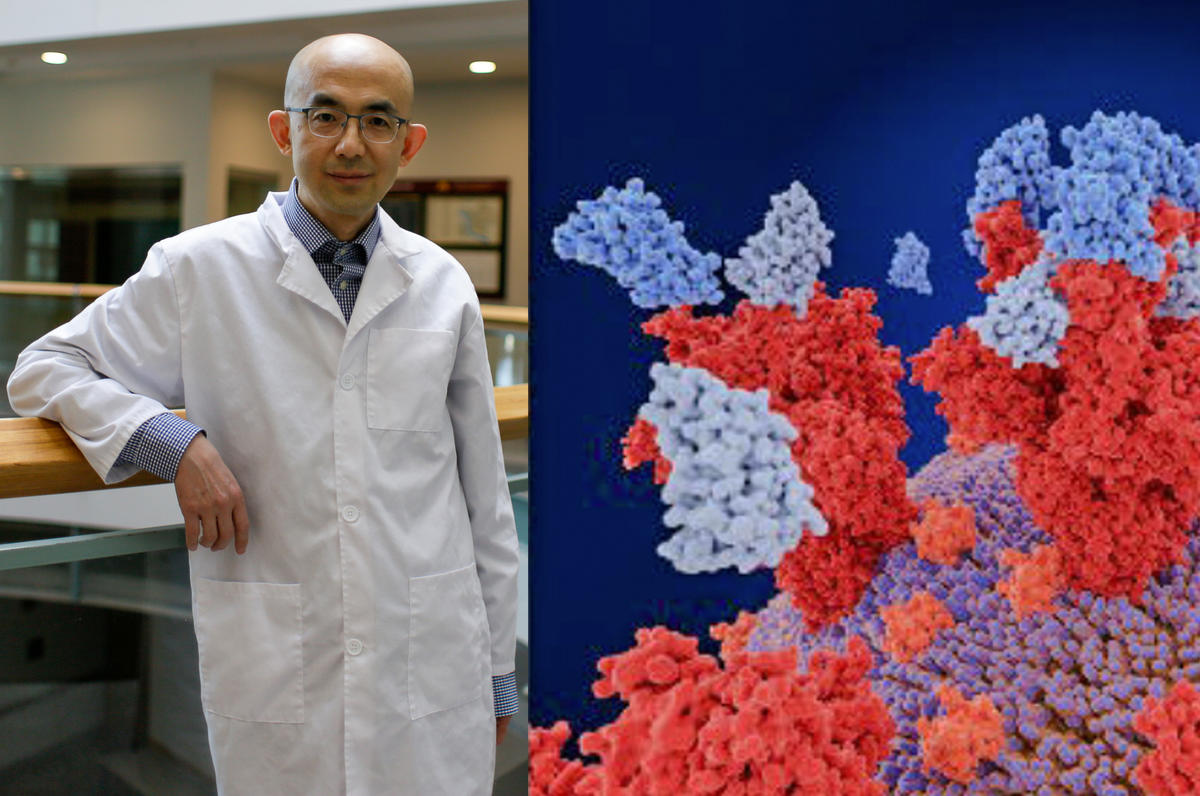
MINNEAPOLIS/ST. PAUL (12/05/2023) – Researchers have discovered a novel mechanism whereby the SARS-CoV-2 virus, which causes COVID-19, can vary its mode of infection in human cells. Published in the journal eLife, a team from the University of Minnesota and the Midwest Antiviral Drug Discovery (AViDD) Center found the virus can alternate between being highly infectious and avoiding detection by the immune system. This understanding is vital for grasping the virus' impact during the pandemic and for predicting its potential evolutionary developments.
The spike protein of the virus, which is crucial for attaching to and infecting human cells, includes a flexible section known as the receptor-binding domain (RBD). Fang Li, PhD, and his team at the University of Minnesota made an early breakthrough in the pandemic, finding the RBD of SARS-CoV-2 doesn't always remain in an accessible, "ready to connect" state. They proposed the capacity of the RBD to alter its configuration permits the virus to either unveil itself for binding with human cells or shield itself from the immune system's antibodies.
In their recent research, scientists examined the variances between SARS-CoV-2 and its relative, the SARS-CoV-1 virus responsible for the SARS outbreak from 2002 to 2003. They pinpointed a particular area of the spike protein that determines the configuration of the RBD. Variations in this segment can shift the virus toward a more infectious state by opening up, or a more elusive state by closing off.
"When a novel coronavirus first emerges in humans, it often encounters minimal immune resistance and tends to be highly infectious,” explained Dr. Li, a professor and endowed chair of pharmacology at the U of M Medical School and co-director of the Midwest AViDD Center. “As immunity develops among people, whether through infection or vaccination, the virus may increasingly resort to more elusive strategies to remain undetected. We have come to understand how a coronavirus can accomplish this evolution.”
Li added SARS-CoV-2 was particularly notable for its ability to strike a balance between high transmissibility and the capacity to evade the immune system from the outset of the pandemic.
At the Midwest AViDD Center, Dr. Li's team is also working on innovative treatments using nanobodies — tiny antibodies derived from animals like alpacas — that can target SARS-CoV-2 even when it's in stealth mode. The study indicates these nanobodies have a significant advantage over conventional human antibodies in detecting and neutralizing SARS-CoV-2.
The research was co-led by Dr. Li and Bin Liu, PhD, associate professor at the Hormel Institute and investigator of the Midwest AViDD Center, with important contributions from postdoctoral pharmacology researchers Qibin Geng and Yushun Wan. Funding support for this study was provided by the National Institute of Allergy and Infectious Diseases, part of the National Institutes of Health, through the following grants: R01AI089728, R01AI110700, R01AI157975, and U19AI171954.
###
For media inquiries, contact: Kali Kotoski at [email protected]
About the Midwest AViDD Center
The Midwest AViDD Center is developing the next generation of antiviral drugs for pandemic-level viruses, including SARS-CoV-2, Ebola, Lassa, and Zika. Headquartered at the University of Minnesota and including 18 other institutions nationwide, the Midwest AViDD Center is part of a network of nine national centers established by the National Institute of Allergy and Infectious Diseases (NIAID), part of the National Institutes of Health.
About the University of Minnesota Medical School
The University of Minnesota Medical School is at the forefront of learning and discovery, transforming medical care and educating the next generation of physicians. Our graduates and faculty produce high-impact biomedical research and advance the practice of medicine. We acknowledge that the U of M Medical School, both the Twin Cities campus and Duluth campus, is located on traditional, ancestral and contemporary lands of the Dakota and the Ojibwe, and scores of other Indigenous people, and we affirm our commitment to tribal communities and their sovereignty as we seek to improve and strengthen our relations with tribal nations. For more information about the U of M Medical School, please visit med.umn.edu.
About the Hormel Institute
The Hormel Institute is an independent biomedical research department within the University of Minnesota’s Office of the Vice President for Research. Collaborative research partners include Masonic Cancer Center UMN (a Comprehensive Cancer Center as designated by the National Cancer Institute, NIH), Mayo Clinic, and many other leading research centers worldwide. The Hormel Institute, which tripled in size in 2008 and doubled again in size in 2016, is home to some of the world’s most cutting-edge research technologies and expert scientists. Over the next few years, The Hormel Institute will broaden its impact through innovative, world-class research in its quest to improve human health.